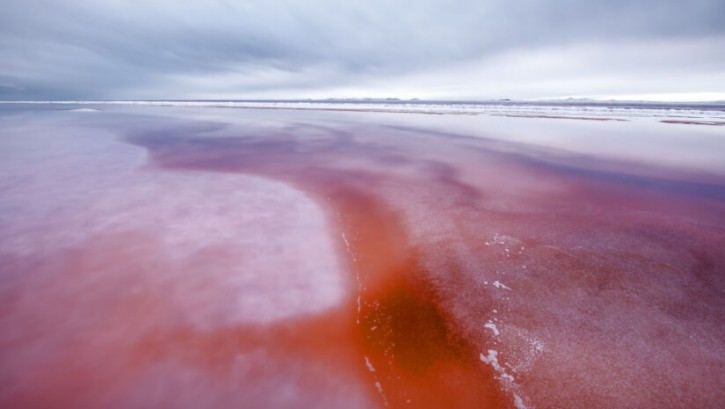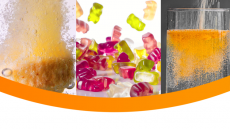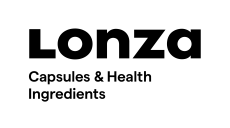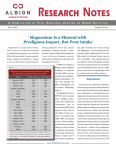Trace expands capacity to remineralize the world

I first met him in 2023 at the SupplySide West natural ingredients trade show in Las Vegas, interested in the Utah-based company’s recent service trip to Africa as part of its mission to remineralize the world through supplementation and concerned that the Great Salt Lake where the minerals come from might be drying up.
Dr. Starkey joined Trace in 1991 after meeting Matt Kilts on a church mission in Florida. Kilts had been working at the company since he was a sophomore in high school and would become co-owner and managing partner alongside college friend and fellow Trace sales representative Scott Perkes in 1999.
Today, as vice president of training and education, Dr. Starkey travels the world talking about the importance of trace minerals for health and nutrition. Part of this education might include pictures of the gaping gash across the tendon at the top of his knee taken right after the chainsaw accident.
Once he had managed to hobble back home and before going to the emergency room, his wife poured an eight-ounce bottle of Trace’s ConcenTrace minerals on the wound—to which Dr. Starkey credits the worst pain in his life but perhaps his ability to walk without a cane as well.
He also talks about a broken food system of Pop-Tart breakfasts and nutrient-depleted soil feeding a stress-riddled society as a crime against our intelligence.
“We're in a bad situation,” he said. “But when it comes to putting that foundation back into our children and to ourselves, we can do it for pennies on the dollar.”
Extracting from the Great Salt Lake
Trace pulls its water from the Great Salt Lake, the largest saline lake in the Western Hemisphere, to fill a series of holding ponds located on 10 acres on the Promontory Point peninsula. Here, the sodium and sediment settle, and the mineral-rich brine consolidates at the top as the water moves from pond to pond over the course of eight to 12 weeks.
Primarily fed by rivers flowing from the Rocky Mountains and the Colorado Plateau, the lake contributes nearly $2 billion to Utah’s economy, with major operators including Morton Salt, Cargill, U.S. Magnesium and Compass Minerals extracting industrial grade salt, magnesium, lithium, potash and brine shrimp to feed the global food, automotive, battery, fertilizer and aquaculture industries.
Mineral extraction accounts for 9% of water use, and Trace represents less than 1% of that. There is also the demand from agriculture upstream and the construction of ever-expanding housing subdivisions in the watershed.
In January 2023, a report led by researchers from Brigham Young University warned that without emergency intervention, the lake could disappear within the next five years. A few months earlier, U.S. Geological Survey data showed levels reaching historic lows of 4,188 feet in both the lake’s North and South arms. The 1959 construction of a railroad causeway split the lake into two ecologically distinct bodies of water—creating the deep pink-hued, mineral-rich Gunnison Bay to the north and preserving a fresh-water infused, life-supporting main body to the south.
A guest essay published in The New York Times in March 2023 painted a haunting picture of a Great Lake Salt Lake on the brink of extinction and the creation of a giant toxic dust bowl should the waters retreat to release the heavy metals trapped in the lake bed.
Addressing sustainability concerns tied to remineralizing the world, Dr. Starkey said that Trace is very involved in keeping its footprint to a minimum and with government and nonprofit conservation efforts.
“What we take from the lake every year is so minimal as compared to what we can do with the water that we extract,” he added, referencing a natural ebb and flow that has seen water levels rise and fall since Trace’s founding 50 years ago. “The lake was here long before we were and will be here long after.”
Utah's 2022 and 2023 legislative sessions concluded with a record number of water conservation bills and appropriations totaling nearly $1 billion in spending to re-envision the lake’s water as resource rather than commodity.
Earlier this year, the Utah legislature passed the monumental H.B. 453 Great Salt Lake Revisions to ensure extraction industries work together with state leaders to improve and contribute royalties to the health of the lake and surrounding wetlands. It includes a provision that would shut down all mineral extraction should water levels fall below a certain threshold—a measure that Trace said it fully supports.
At the time, the company was preparing to transition from 15 smaller to four larger and more efficient ponds but could not start on construction until royalties, licensing and easement agreements had been worked out and the bill passed.
Digging started in May, and the ponds came online July 15, a month into the summer harvest season but still in time to take advantage the scorching dry heat required for the solar evaporation.
The new ponds can pull four to five times more water and are expected to increase harvest numbers by up to 30 times in the next four years.
Snowballing demand
Ryan Fisher, who assumed his new role as chief sustainability officer a year ago, started with the company in 1993 on a 12-person team that included Dr. Starkey, Kilts and Perkes.
At the time, lake levels were holding steady just under 4,200-feet after peaking at 4,211 feet in the late 1980s, and the company sold around a dozen items primarily in mom-and-pop health food stores around the country.
That offering has since expanded to some 150 products in liquid, powder, tablet and gummy formats retailed and wholesaled across seven categories, with placements in Walmart, GNC, The Vitamin Shoppe, Sprouts, Thrive Market, Meijer, Fruitful Yield, Wegman's, Swanson, Whole Foods, Natural Grocers and Fresh Thyme and available online at iHerb. Other recent developments include the acquisition of a Santa Fe-based herb business and partnering to open a gummy manufacturing plant in Texas.
“We have always believed that new products are the lifeblood of our company and continued introducing products each year based on internal research, customer demand and industry trends,” Fisher said. “Our niche has always been to see how we can remineralize the world through our product innovation and new product offerings.”
Trace’s top seller is ConcenTrace, the foundational trace minerals extracted from the brine that goes into 99% of the products in the portfolio. Latest additions include mineral-rich shilajit from the Himalayas, a line of pet supplements and new flavors of its popular ZeroLyte hydration packs.
The company also just brought in a new chief marketing officer, Linnette Reindel, charged with rolling out a Fall rebrand that will unify the range and align with the evolving science-forward and self-care trends in the market under the Trace (formerly Trace Minerals) banner. The names of Trace’s new scientific advisory board of certified doctors and research practitioners, which already includes natural products industry veteran Anthony Almada, will be announced in September.
On a tour of the Trace facilities in June, Fisher pointed out the original brick building where he still has his office. It is now surrounded by a campus of beige corrugated structures housing a circuit of receiving, manufacturing, warehousing and shipping operations.
A Quonset hut on site contains 22 five-thousand-gallon tanks of finished brine that supplies two 6,000-gallon tanks in the filling room. From there it cycles through filtration, mixing, a micro lab, filling, packaging, labeling, quality control and storage before being dispatched around the globe. And the operations continue to expand to meet what Fisher calls “snowballing demand.”
“This door wasn’t here the last time I walked through,” he said. “Let’s walk through it. This is a brand-new refrigerated area where we keep raw materials. We have one on the other side of it, but with the growth, we needed another one.”
Trace was also pending receipt of new high-speed stick pack and filling machines and a mass spectrometer for heavy metal testing of materials on site although it employs third-party labs to certify consistent quality, safety, purity and potency.
Fisher credited much of the snowballing demand to a rigorous quality assurance program, backed by Good Manufacturing Practice (cGMP), National Sanitation Foundation (NSF), Global Retailer and Manufacturing Alliance (GRMA), Non-GMO Project, halal, kosher and vegan certifications.
In May, the company also started transitioning its entire line to 100% post-consumer recycled content (PCR) bottles and is working on its ISO 14001 certification this year to ensure that its sustainability initiatives are measurable and actionable.
Remineralizing the world
Much of Trace’s commercial model is based on educating consumers and industry about consumer health needs, the demineralization of the world’s soil, food and purified water, and the importance of putting minerals back into the body to avoid dysfunction in an overprocessed society.
Its hero product ConcenTrace is nature’s combination of 72 ionic minerals and trace elements—from magnesium, potassium and chloride to iodine, iron and selenium. This full spectrum, as Trace explains, not only provides benefits across systems but helps the body absorb and conduct the other nutrients and vitamins that it consumes.
“The balance of minerals that exists in ConcenTrace is very similar to blood plasma or amniotic fluid, so you're getting them in the proper proportion and balance as well,” Fisher said. “And that's what's unique about ocean water, or in this case, our inland sea with the Great Salt Lake.”
With its market share firmly established in the U.S., Trace started to increase its presence overseas in 2013 and now sells its mineral blend in close to 40 countries.
Last year, its sustainability efforts folded in a Trace Gives Back program with a first service trip to build a water well and donate bottles of ConcenTrace to residents in Matabelleland, Zimbabwe. The team plans to continue setting up water wells, improving access to education and promoting health and remineralization in communities in need.
In any part of the world, the message about benefits is the same: See what it can do for you or get your money back if you don’t feel a difference within 30 days.
Consistently replenishing trace minerals in the body might boost energy and performance, fortify skeletal structure, curb food and sugar cravings, improve focus, clarity and sleep or all the above.
“We don't say what it does because one, we can't prescribe, but two, it is different in every person,” Fisher said. “The whole concept of minerals is to give your body the minerals it needs and let it balance itself.”
















